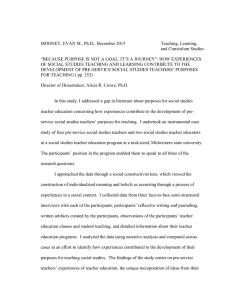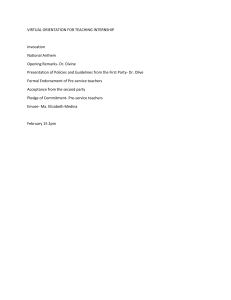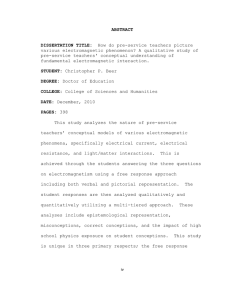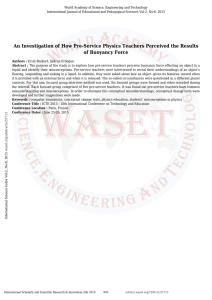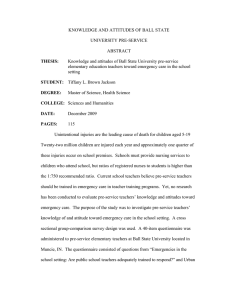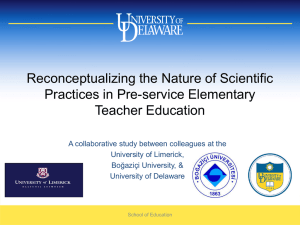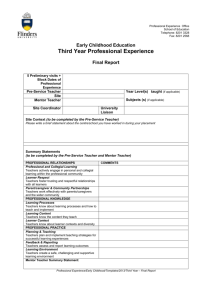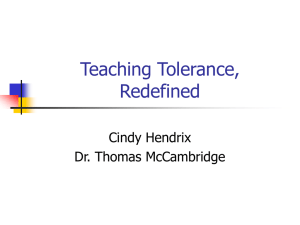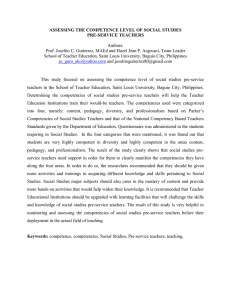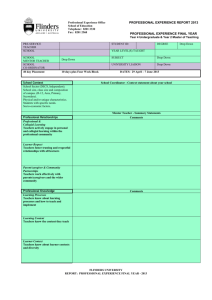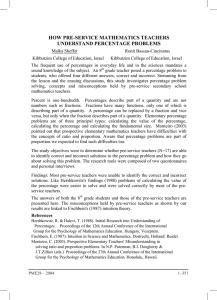Ed330.Diversity and Motivation in Education
advertisement
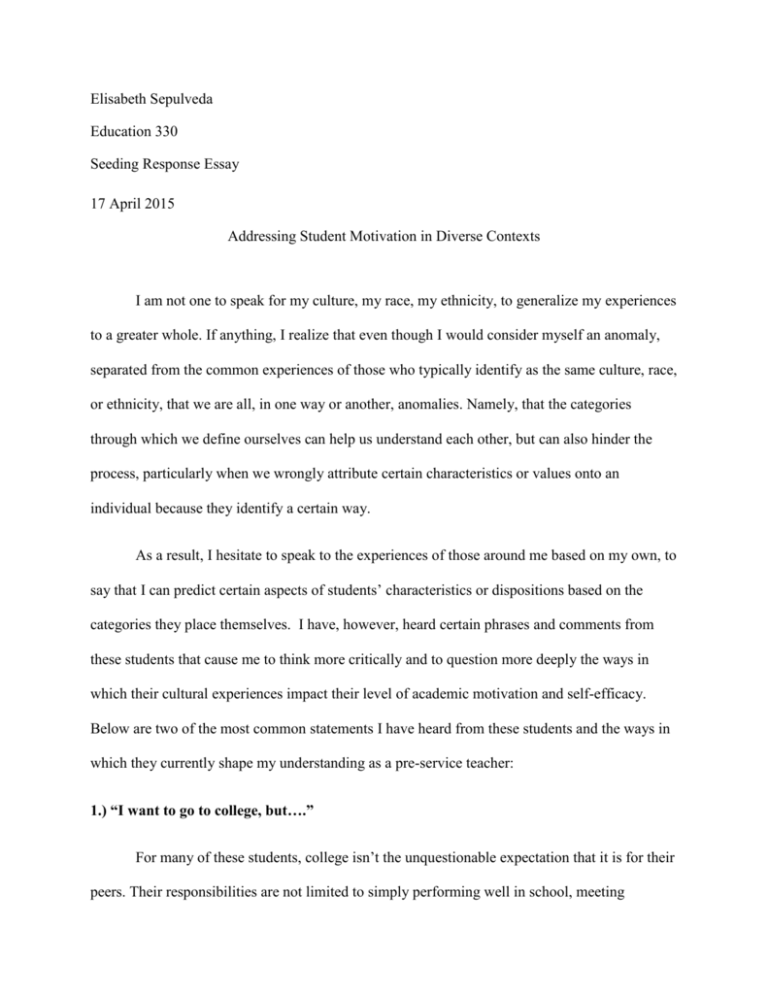
Elisabeth Sepulveda Education 330 Seeding Response Essay 17 April 2015 Addressing Student Motivation in Diverse Contexts I am not one to speak for my culture, my race, my ethnicity, to generalize my experiences to a greater whole. If anything, I realize that even though I would consider myself an anomaly, separated from the common experiences of those who typically identify as the same culture, race, or ethnicity, that we are all, in one way or another, anomalies. Namely, that the categories through which we define ourselves can help us understand each other, but can also hinder the process, particularly when we wrongly attribute certain characteristics or values onto an individual because they identify a certain way. As a result, I hesitate to speak to the experiences of those around me based on my own, to say that I can predict certain aspects of students’ characteristics or dispositions based on the categories they place themselves. I have, however, heard certain phrases and comments from these students that cause me to think more critically and to question more deeply the ways in which their cultural experiences impact their level of academic motivation and self-efficacy. Below are two of the most common statements I have heard from these students and the ways in which they currently shape my understanding as a pre-service teacher: 1.) “I want to go to college, but….” For many of these students, college isn’t the unquestionable expectation that it is for their peers. Their responsibilities are not limited to simply performing well in school, meeting personal expectations, and going on to work in a position where they can autonomously selfsustain. Instead, many are living in a community context, where they feel that they owe much to their family. Much of the sense of responsibility is tied into cultural context, where the family unit has priority over the individual. What these students feel they “owe” can differ; I know one girl who worked at McDonalds after school to contribute to the family income, and later babysat her younger siblings on the weekends so that her parents could work. She was also told she would have an arranged marriage with a young man in her home country. Although she wanted to follow her personal interests and academic goals, and longed to attend college, she was equally convicted that she owed it to her family to care for and support them, and to prepare for a later marriage initiated through traditional culture. Students in this situation, who come from different cultural backgrounds, may not have the same motivation to perform well in school because they often don’t see the direct connection between academic performance and the later success that is so often emphasized with their peers. If these students are not tracked towards higher education and do not see themselves filling skilled positions in the future, their motivation for learning may decrease as a result. It is at this juncture that there appears to be an impasse. The cultural norms which students in my friends’ position experience may seem completely unfair. It would be easy to argue against the narrative the student has been pushed into their entire life—saying that, in fact, the student should not adhere to their family’s expectations, should break out on their own, and should pursue their future and education above all else. Talking with my friend, however, I noticed that she was not necessarily resentful, nor did she feel that her experience was holding her back. She accepted the condition of her life as something she chose to do out of love for her family. To suggest otherwise would be to blatantly disrespect her devotion to her family and her cultural values, appearing insensitive even when, in fact, the suggestions came from a wellintentioned place. As a pre-service teacher entering an area where these questions may arise, I would be cautious with any advice or comments offered to these students about their future situations. Initially, I would listen to their perspectives and ask questions to learn about the specifics. Next, I would listen to their feelings about the situation—do they feel resentful or content? Is this truly the students’ own path, or one that they feel obligated toward? Finally, if the student appears to have a deep interest in attending college, but seems to think that they would “abandon” their family, or feels constrained by finances, I would discuss potential courses of action in which they might feel comfortable attending college—situations in which both their needs and the needs of those closest to them would be met. Talking with the parents—with whom I have ideally formed a prior relationship with—is also an important aspect, to communicate my thoughts and respect their authority as the parents and guardians of the student. Ultimately, understanding the ways in which culture may impact future educational trajectories and motivation—and seeking to tactfully address these areas—is an important area of consideration. “I don’t have the money/resources to do well” Students from different socioeconomic backgrounds are often acutely aware of the differences created by income inequalities. Many observe the differences in the classroom based on which students can afford the newest or best clothes/technology/weekend activities/vacations. Beyond immediate interactions however, there are certainly divides that directly impact academics. Children whose parents cannot afford academic enrichment camps, private tutors, or standardized test prep courses may feel that they are tracked to perform poorly—that somehow, these opportunities have bypassed them. And indeed, it is true that those who experience a myriad of enrichment activities will have the advantage in a number of cylinders of their life. It does not, however, mean that students lacking these experiences are unable to do well. While socioeconomic differences are inevitable, and leveling differences through introducing scholarships or open-access programs is not always feasible, there are certain mindsets that are important to reinforce with students, particularly those in less-than-ideal situations. Carol Dweck discusses the fixed versus growth mindsets in her book, “Mindset”, and the ways in which fostering a growth mindset—or a “can do” approach to learning—can lead to impressive academic growth, in contrast with those who believe that intelligence and ability are fixed. Knowing that many students lack the opportunities experienced by their peers, can help teachers reinforce the theme that effort plays a major role in success. Additionally, the concept of neuroplasticity—or the idea that the brain can change and become good at whatever it repeatedly does—is an exciting reality for students who feel that they are unable to perform at the level of others because they do not have the intelligence or ability. As a pre-service teacher, it is important for me to consider the ways that student motivation can be effectively encouraged, as motivation levels often correlate more closely with student academic success than do outside interventions. I hope to incorporate this understanding into my interactions with students in the classroom, and to encourage those lacking the benefits that many of their peers experience, to recognize the important of their effort in academic success. In conclusion, although no one student can or should be categorized, there are two reactions, tied into social and cultural factors, that have direct bearing on student motivation. As a pre-service teacher, I find it absolutely necessary to think critically and thoroughly about tactful approaches to these issues, seeking to find the best, unique solution for students, while being mindful of the importance of sensitivity. If the issues are addressed well, they can impact student motivation, and ultimately can prepare students for greater personal success.
